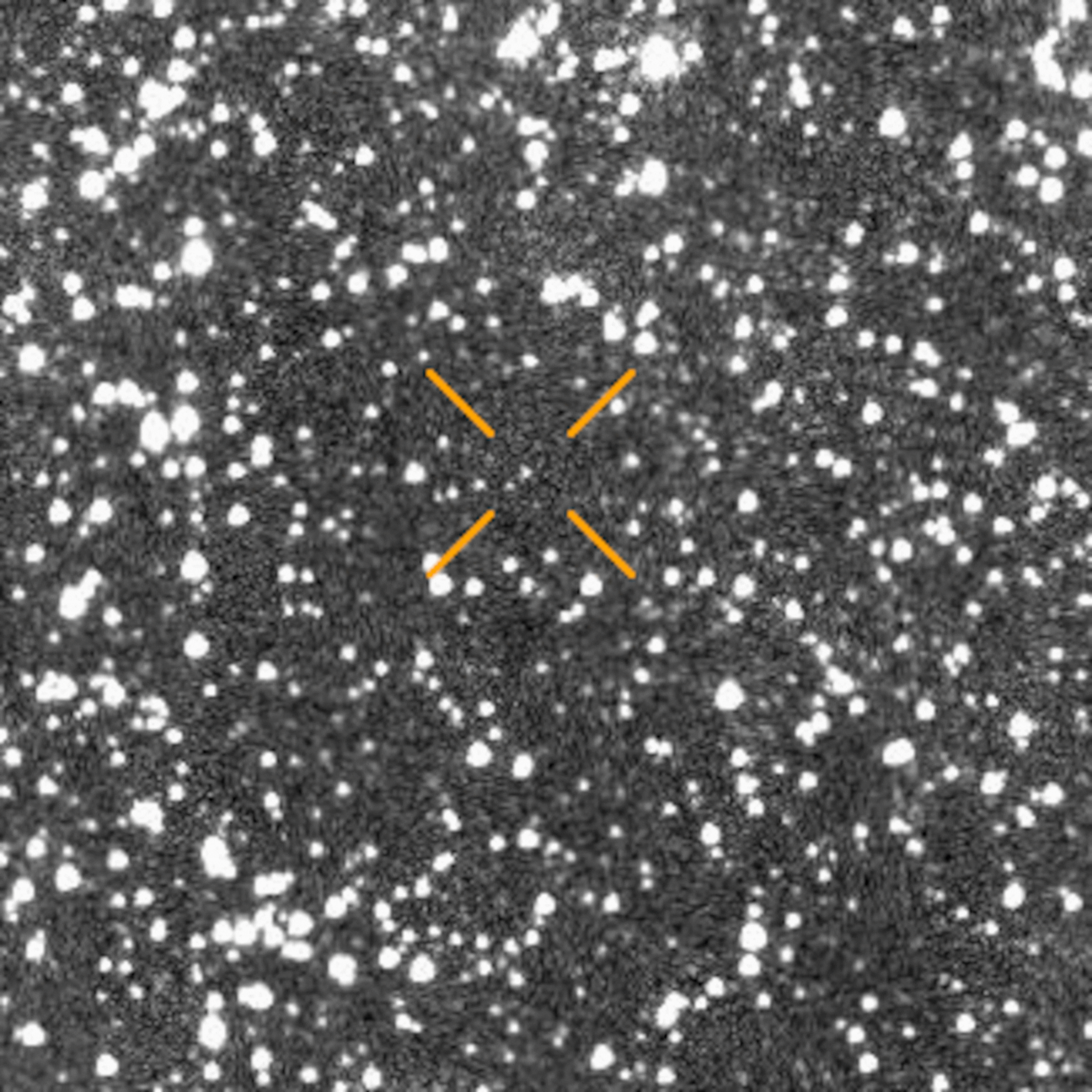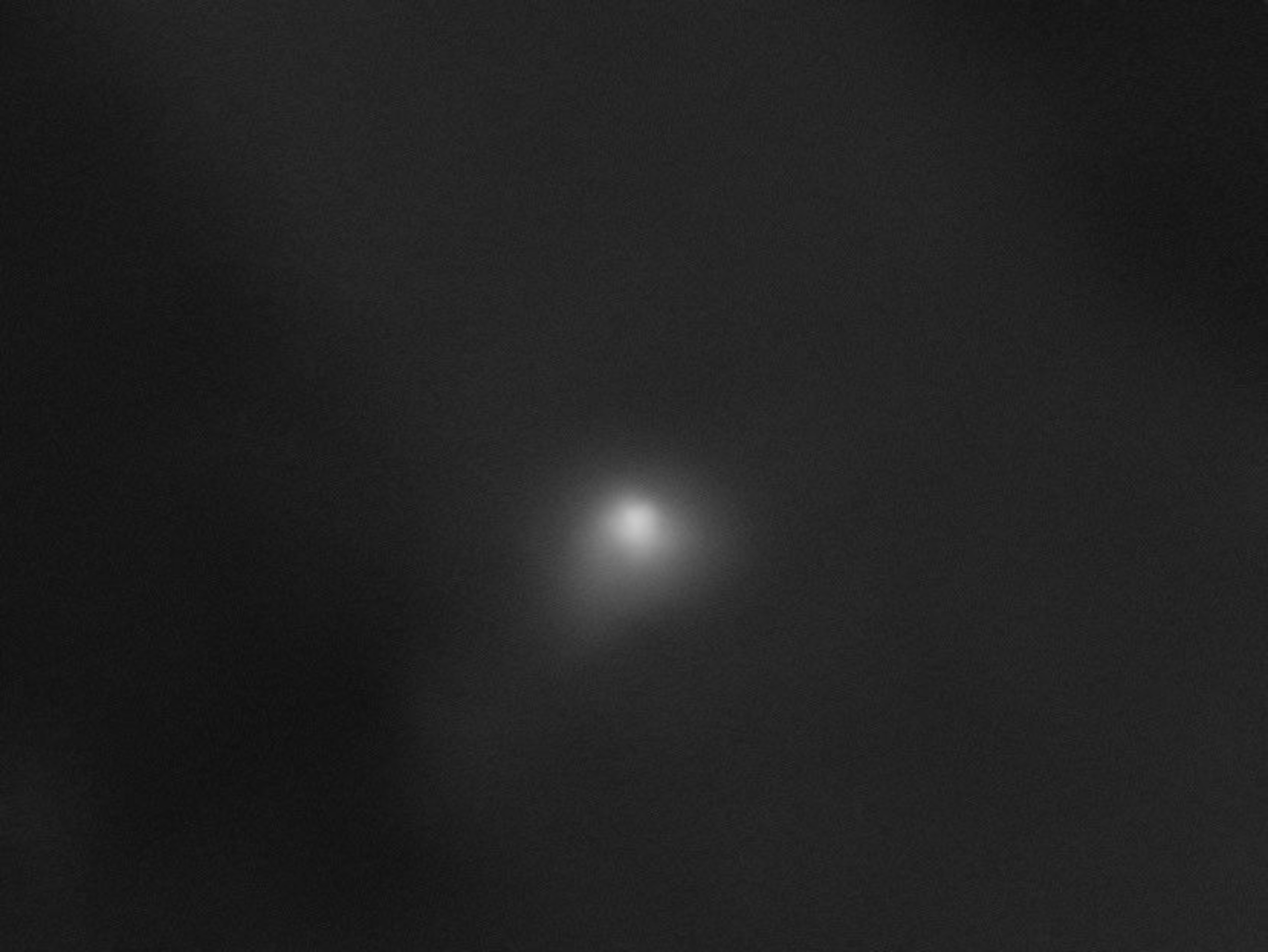
Rock From Another Star System Has a Carbon-Rich Coating
The interstellar interloper ‘Oumuamua is caked with reddish material likely formed by radiation—but hints of alien tech remain nonexistent.
The first object to visit our solar system from interstellar space is currently making a clean getaway from our cosmic neighborhood. But according to astronomers watching its escape, the space rock’s surface is anything but clean.
After examining how the object reflects sunlight, scientists found that the strange rock, called ‘Oumuamua, is probably coated with a carbon-rich schmutz in a layer that’s more than a foot thick. The residue likely formed as interstellar radiation bombarded the object’s surface as it tumbled through the void.
The results, published on Monday in Nature Astronomy, could help explain why the object—likely an amalgam of rock, ice, and dust—didn’t spew out plumes of water vapor as it flew by the sun, even as its surface reached hundreds of degrees Fahrenheit.
“If you take comets out there at interstellar space, they’ll form these dark, carbon-rich objects, and that looks like what we saw,” says study coauthor Alan Fitzsimmons, an astronomer at Queen’s University Belfast. “We don’t have a very decisive picture of this thing; all we can say is our measurements are consistent with this idea.”
Riveting Rendezvous
Discovered in October as it raced past Earth, ‘Oumuamua is one of a kind: The cigar-shaped object is up to a quarter mile long, tumbling end over end as it exits our solar system at more than 98,000 miles an hour. Astronomers long thought that other star systems flung off such planetary debris, since our own solar system does the same. Now, for the first time, astronomers have caught one in the act.
Originally, ‘Oumuamua was thought to be a comet, but University of Hawaii astronomer Karen Meech ruled out this tidy classification soon after its discovery, because ‘Oumuamua didn’t produce any plumes of gas or dust, which are the calling cards of comets.
“That was the first big surprise: We expected these things to be icy, and then this thing looked for all the world like an asteroid,” says Fitzsimmons.
Once Fitzsimmons got word of the sighting, he and his colleagues sprang into action, using telescopes in the Canary Islands and Chile to track the object and measure how it reflected wavelengths of visible light. Separately, a team led by Michele Bannister and Meg Schwamb used Hawaii’s Gemini Observatory to see the object in near-infrared light. The Gemini results have been published in Astrophysical Journal Letters.
“It was a challenging observation,” says Bannister, a coauthor on both papers and an astronomer at Queen’s University Belfast. “We’re tracking it on the sky, making a hundred-ton telescope dance like a ballerina.”
The studies show that ‘Oumuamua more effectively reflects reddish light than bluish light—a roundabout consequence of high-energy particles flung off as shrapnel from cosmic cataclysms such as supernovae. Over eons, this interstellar radiation can spark the formation of reddish, carbon-rich crusts on the surfaces of comets and asteroids.
The Gemini data imply that unlike many of our solar system’s comets, the surface of ‘Oumuamua is bone-dry and devoid of water ice. Thermal simulations of the carbon-rich layer suggest that if this schmutz were about 16 inches thick on ‘Oumuamua, it could insulate an ice-rich interior from the heat of stars such as our sun.
As it happens, the new studies of ‘Oumuamua appear mere days after the hundredth birthday of visionary science fiction author Arthur C. Clarke, whose book Rendezvous with Rama describes humankind’s run-in with an oblong, interstellar object similar in form to ‘Oumuamua.
“As usual, he was pretty much on the button,” says Fitzsimmons, though unlike the alien ship Rama, ‘Oumuamua appears to be natural in origin. These studies, among others, tamp down speculation that ‘Oumuamua may be an extraterrestrial artifact: In the near-infrared, there are no signs of metallic surfaces on the object.
Also, the Breakthrough Listen project—which looks for extraterrestrial radio signals—heard nothing but silence when it recently took aim at ‘Oumuamua.
“We know what the reflected spectra of spacecraft look like,” says Bannister. “This is not it.”
Last Looks
The window to study ‘Oumuamua from Earth has all but closed. As the object speeds away from us, it reflects far less sunlight back toward Earth. But a handful of telescopes continue to monitor the out-of-this-world object looking for new clues.
“It’s too small, and it’s way too far away, so we have to really pull out the big guns,” says Joe Masiero, a planetary scientist at NASA’s Jet Propulsion Laboratory who has studied ‘Oumuamua and wasn’t involved with either new study.
In November, a team led by astronomer David Trilling tried to spot ‘Oumuamua with the infrared eye of the Spitzer Space Telescope. If they were successful, they’ll be able to nail down the percent of incoming light that ‘Oumuamua reflects, which will help clarify what the surface is made of.
In addition, a team led by Meech will try tracking ‘Oumuamua with the Hubble Space Telescope in January 2018 to refine its trajectory. Bannister also says that the ESA spacecraft Gaia, which is mapping the Milky Way in unprecedented 3-D, will publish more data next year—a windfall for astronomers tracing ‘Oumuamua back to its last celestial port of call.
“We have an alien object spotted flying through the solar system!” says Fitzsimmons. “You never assume that you’re going to get the chance to do this.”







